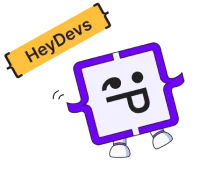
Mastering Docker: Effortlessly Update and Deploy Web App Changes
Updating and deploying web app changes in Docker images or containers is a straightforward process that ensures seamless application maintenance and deployment.
In the world of web development, keeping your application up-to-date and smoothly deploying changes is crucial. Docker, a powerful containerization technology, offers a streamlined approach to managing web app updates. In this article, we will explore the step-by-step process of updating and deploying web app changes in Docker images or containers. By following these guidelines, you'll be able to effortlessly maintain and deploy your web app with confidence.
Step 1: Acquire or Create the Image
The initial step involves obtaining or creating an image that encompasses your web app's code and dependencies. An image serves as a blueprint for creating a container. You have two options: either build your own image using a Dockerfile or pull an existing image from a repository, such as Docker Hub, tailored to your web app's requirements. Ensure that the image matches your web app's operating system, web server, and programming language.
Step 2: Updating Your Web App Code
To update your web app, modify the relevant code files according to your requirements. Make necessary changes using your preferred editor or IDE. Remember to commit these code changes to a version control system, such as Git, to maintain a reliable history of your updates.
Step 3: Building and Pushing the Updated Image
Once your code changes are complete, it's time to build a new Docker image. Navigate to your project's root directory containing the Dockerfile. In your terminal, execute the "docker build" command to initiate the build process. Carefully monitor the build's progress as Docker executes each instruction.
After the build completes, inspect the image using the "docker images" command. Optionally, you can push the image to a container registry, like Docker Hub, for wider distribution or deployment across multiple environments. Use the "docker push" command, preceded by the appropriate login, to push the image to the registry.

Step 4: Stopping and Deploying the New Container
To deploy the updated web app, follow these steps:
1. Stop the existing container.
2. Remove the stopped container.
3. Run a new container using the updated image.
Execute the following commands sequentially in your terminal:
Utilizing container orchestration tools like Docker Compose or Kubernetes can simplify deployment and enable effortless scaling of your web app.
Step 5: Testing Your Web App
Before deploying your web app changes, it is vital to perform thorough testing. Begin by using the "docker ps" command to list the running containers and their port mappings. Access your web app through a browser or using a "curl" command, ensuring that it functions as intended and meets the required functional and performance benchmarks.
To diagnose any issues, leverage the "docker logs" command to view container output and errors, or the "docker inspect" command for more detailed configuration and status information. Conduct extensive testing to ensure compatibility and security, and address any potential issues.
Step 6: Pushing the Image
Once you have confirmed the functionality and stability of your web app, it's time to push the updated Docker image to a repository. By doing so, you can share the image with other developers or users and deploy it to production environments. Use the "docker push" command, specifying the image's name and tag as arguments. Prior to pushing, ensure you are logged into the repository using the "docker login" command.
To maintain consistency and version control, tag your image with a meaningful and descriptive name, such as "webapp:latest" or "webapp:v1.2."
Step 7: Deploying the Container
The final step involves deploying the container based on the updated image. Utilize the "docker run" command, substituting the previous image name and tag with the newly updated ones. Alternatively, you can use "docker pull" to fetch the latest image from the repository before running the container.
For more complex deployments and management, consider employing tools such as Docker Compose, Kubernetes, or Swarm. These orchestration tools enable the efficient management of multiple containers across various hosts or clusters.
Conclusion
Updating and deploying web app changes in Docker images or containers is a straightforward process that ensures seamless application maintenance and deployment. By following the steps outlined in this article, you can confidently update your web app, test it thoroughly, and deploy it to production environments with ease. Leveraging the power of Docker and its ecosystem of tools empowers developers to streamline the deployment process and focus on delivering exceptional web applications.
About HeyDevs
HeyDevs is a revolutionary new platform that empowers developers to take control of their careers, connect with other developers and find job opportunities that align with their goals and interests, without ever needing to apply for a single job! With HeyDevs, companies compete for you, not the other way around.
For developers, HeyDevs offers invaluable resources including our specialized swipe-to-work function, anonymous profile, CV builder, and customizable search criteria, with the ability to connect and chat with prospective employers completely on-site. For businesses, HeyDevs offers tools to maximize the recruitment process, saving time and money, with a talent pipeline that streamlines a majority of the hiring process directly on the platform, eliminating the need for recruiters or headhunters so the hiring process can be handled with HeyDevs as the only medium between employer and candidate, all powered by smart matching to ensure the most relevant matches are provided first. HeyDevs is a truly unbiased hiring platform, delivering a diverse pool of talent that hides information such as avatar, age, and gender, focusing solely on experience and skill, and paving the way for a more inclusive workplace.





